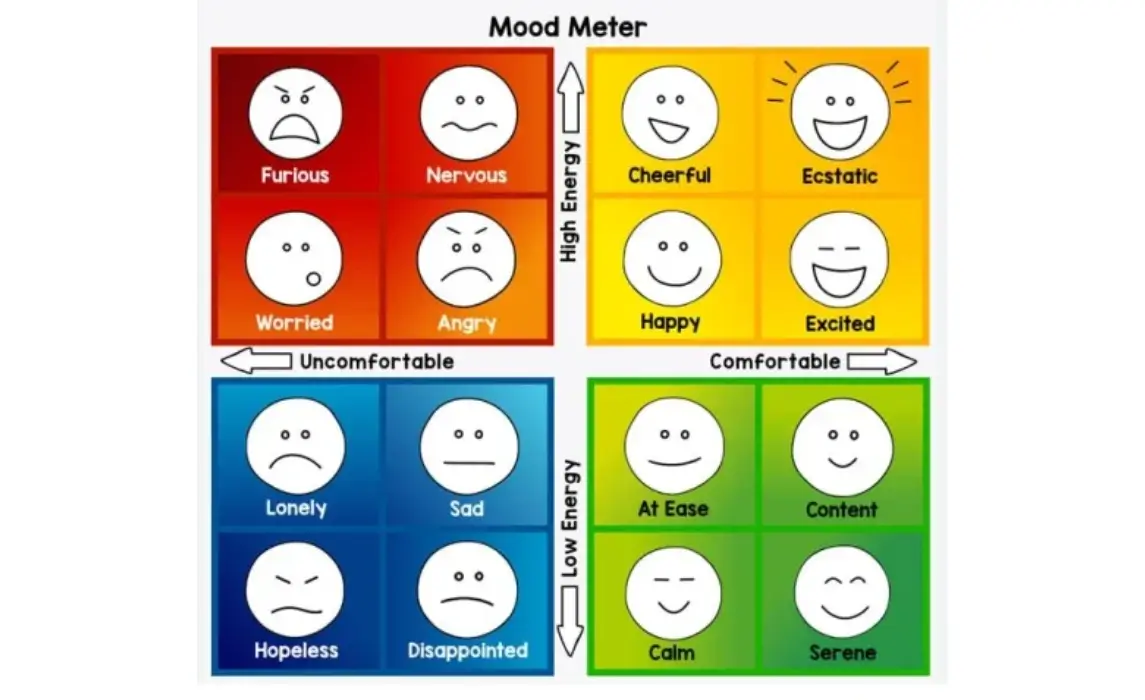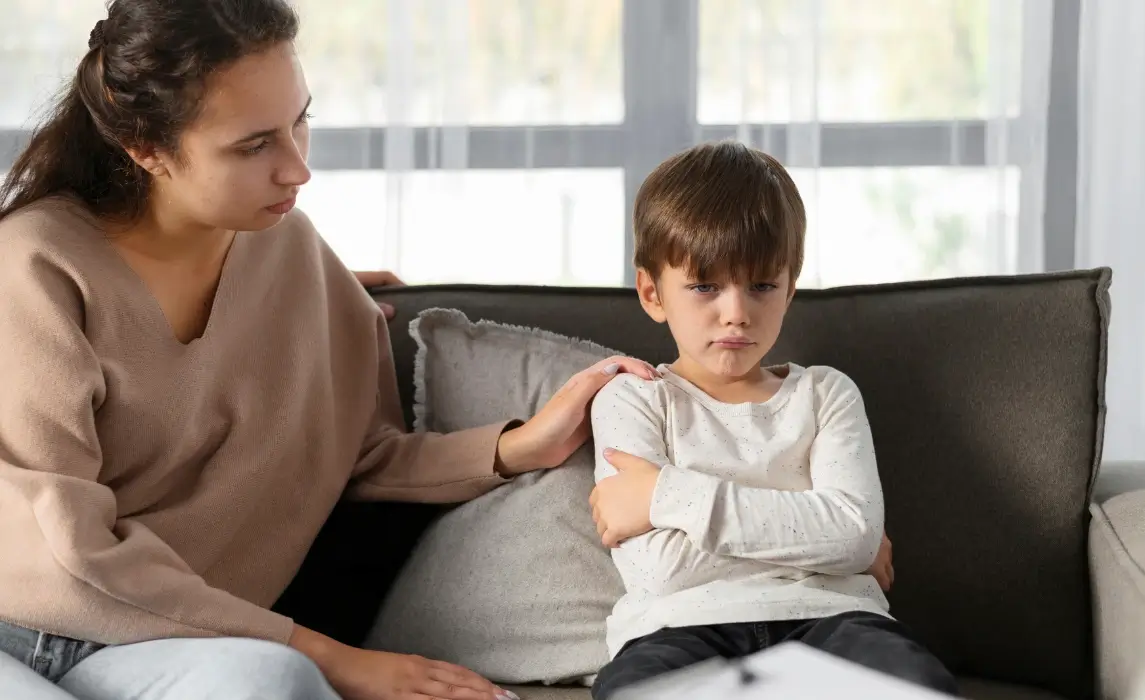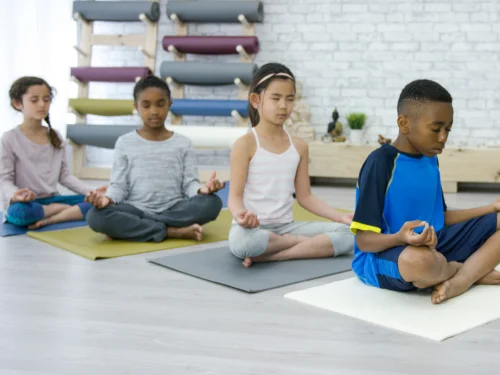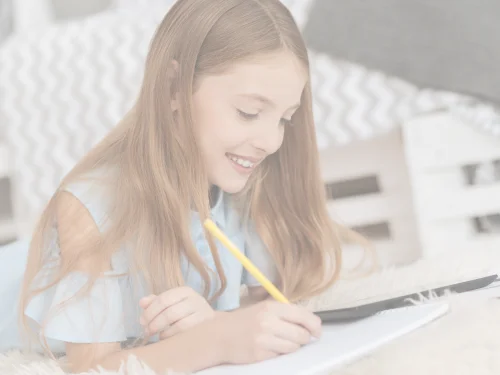How to Boost Emotional Intelligence in Children

Yes—finger plays, clapping games, and dance routines that use hand gestures all help. Combine rhythm and repetition for deeper learning.
Send home simple activity ideas, kits, or worksheets. Offer short instructions and encourage family involvement. Regular practice builds lasting progress.
Try origami, sticker scenes, stringing pasta, or painting with Q-tips. Crafts that use small pieces build precision and control.

While a high IQ might help them solve math problems, emotional intelligence helps them solve life problems.
Think about the most successful and happiest adults you know. Chances are, they're not just book-smart, they're emotionally smart too. They know how to read a room, manage stress, show compassion, solve problems, and communicate their needs effectively. These aren't skills that magically appear in adulthood; they're built day by day, conversation by conversation, starting early childhood.
What exactly is emotional intelligence?
It might sound like a complex psychological concept, but really, it's beautifully simple: emotional intelligence is our ability to recognize, understand, and manage emotions. Both our own and others'.
Emotional intelligence in children means developing the skills to say "I'm frustrated because my tower keeps falling down" instead of throwing blocks across the room. It's learning to notice when their friend seems sad and offering a hug. It's understanding that feeling angry is normal, but hitting when angry is not okay.
Benefits of raising an emotionally intelligent child
Emotional intelligence isn’t just a “nice-to-have” skill, it’s a secret superpower that touches every part of a child’s life. Here’s what the research shows:
- 💪 Stronger coping skills – Kids who can recognize and manage their feelings are less likely to get knocked off course by frustration or anxiety during tough tasks.
- 🧠 Clear thinking under pressure – Because they stay calm when emotions run high, they develop better problem-solving skills.
- 💛 Stronger relationships – Children learn to pick up on social cues, understand different perspectives, and respond with kindness instead of defensiveness.
- 🤝 Stronger social skills – They’re the friends everyone wants to be around and the students teachers genuinely enjoy having in class.
And yes, the academic perks are just as powerful:
- 📚 More engaged learners – Emotionally intelligent kids persist through challenges, ask for help when needed, and work well with peers.
- 🗣️ Confident communicators – Their ability to express themselves clearly makes them standout voices in class discussions and group projects.
Ways to help your child develop emotional intelligence
The RULER Method

One of the most effective frameworks is called RULER. It's a simple way to think about the five key skills that build children's emotional intelligence: Recognize, Understand, Label, Express, and Regulate.
R – Recognize
Help kids become emotion detectives. Teach them the physical signs of emotions: the tight chest when they're nervous, the warm face when they're embarrassed, or the clenched fists when they're angry. Simple questions like "What is your body telling you right now?" help children tune into their internal emotional signals.
U – Understand
Dig into the why. Was it disappointment when plans changed? Jealousy when left out? Knowing the cause makes feelings less confusing.
L – Label
Give feelings names. Instead of just "good" or "bad," use words like frustrated, excited, overwhelmed, or content. Emotion charts can make this fun and visual.
E – Express
Show healthy ways to let it out, This might mean using words like "I'm angry that you took my toy without asking" rather than grabbing it back or finding creative outlets like art, music, or journaling when words feel tough.
R – Regulate
Teach calming tools. This doesn't mean suppressing feelings, but rather learning healthy coping mechanisms. Encourage your child to take deep breaths, short breaks, asking for help. These skills help kids stay in control when emotions get big.
The Mood Meter

The Mood Meter is one of the simplest and most powerful tools for helping kids build high emotional intelligence. Picture a bright, colorful chart with four quadrants:
- 🔴 Red: High-energy unpleasant feelings like anger or frustration
- 🔵 Blue: Low-energy unpleasant feelings like sadness or disappointment
- 🟢 Green: Low-energy pleasant feelings like calm or peacefulness
- 🟡 Yellow: High-energy pleasant feelings like excitement or joy
It’s a quick way to check in with emotions that might otherwise stay hidden. Try it at home during dinner or bedtime, just ask, “Where are you on the Mood Meter today?” Suddenly, kids have a simple way to name complicated feelings, and you get a better sense of what they need from you.
Teachers can use it too during morning check-ins or after tough activities. It makes talking about emotions feel normal, and it gives kids space to support each other when someone’s in the blue or red zone
Emotion Coaching

Here’s a little secret: every meltdown, tantrum, or tearful moment is actually a golden opportunity. Emotion coaching turns those tricky emotional storms into emotional self-regulation, self-control, and self-awareness.
When your child is upset, resist the urge to immediately fix or brush off their feelings, slow down. Get on their level, look them in the eye, and simply name what you see:
“I can see you’re really frustrated right now.”
This small moment of validation can be powerful. It tells your child, “I see you, I get you.”
Then take it a step further and help them name the feeling:
“It sounds like you’re feeling disappointed that the playdate got cancelled.”
Once the feeling is named, the brain calms down and that’s when problem-solving becomes possible. You can gently guide them toward solutions:
“What could help you feel better right now?” or “How might we handle this differently next time?”
Remember to maintain healthy boundaries throughout this process. Validating emotions doesn't mean accepting all behaviors, it’s about separating the feeling from the action. You can say,
“It’s okay to feel angry, but it’s not okay to hit your sister. Let’s find a better way to show your anger.”
Classroom strategies that help children build emotional intelligence skills

Nurturing emotional intelligence doesn’t have to be complicated, it can be woven right into everyday classroom routines. Here are a few simple, powerful strategies:
- Role-playing – Give kids a chance to practice social situations in a safe, guided space. It helps them learn how to respond thoughtfully instead of reacting on impulse.
- Read-alouds – Stories naturally open the door to talk about emotions. Pause and ask questions like, “How do you think Sarah felt when her friends left her out?” or “What would you do if you were in Marcus’s situation?” These small conversations build empathy and perspective-taking.
- Group check-ins – Regularly checking in as a class helps build an emotionally aware community. Kids see that everyone experiences different emotions and that it’s completely normal and okay.
Also, stay flexible. If the class feels restless or overwhelmed, it might be better to pause the lesson for a movement break or a calm-down activity. Meeting students where they are emotionally makes learning smoother for everyone.
Fun activities children need for emotional intelligence

Social and emotional learning doesn’t have to be serious or stiff, some of the best EI skills bloom during playtime. Here are a few favorites:
🎭 Feelings Charades
Kids act out different emotions while others guess. It’s hilarious, and it teaches them to read facial expressions, people's feelings, and body language.
🎨 Make-Your-Own Emotion Faces
Grab some play dough or crayons and create faces showing different feelings. It helps kids link emotions with expressions (and gets their creativity flowing).
🧩 Self-Esteem Jenga
Write positive affirmations or emotion-themed questions on Jenga blocks. As kids pull each block, they answer or read aloud, boosting both their emotional vocabulary and confidence.
🧘 Calm-Down Menus
Have kids create a list of go-to calming strategies, like jumping jacks, coloring, listening to music, so they can choose what works best when big feelings hit.
📓 Emotion Journals or Feelings Drawings
Give kids a safe space to explore their feelings through words or pictures. Even if they can’t write yet, drawing their “day’s mood” can help them process emotions.
Common pitfalls to avoid
Even with the best intentions, we sometimes get in our kids’ way when it comes to emotional development.
One big trap? Brushing off their feelings. Saying things like “You’re fine” or “Don’t be sad” might seem comforting, but it can send the message that their emotions aren’t real or worth noticing.
Another is leaning too much on distractions. Screens, toys, or treats can help calm a stormy moment, but if they’re the only tool we use, kids miss out on learning how to sit with tough emotions and build their own coping skills.
And then there’s the “only happy feelings allowed” mindset. It’s natural to want our kids to be happy, but emotional intelligence means being able to handle the whole range—frustration, disappointment, sadness, and everything in between. Letting kids practice working through those tougher feelings is how they build resilience.
You May Also Like: Conflict Resolution for Kids: How to Teach Peaceful Problem-Solving
Building emotional intelligence takes time, and that's okay...
Raising an emotionally intelligent kid isn’t about having perfect days, it’s about showing up, even on the messy ones.
Some days they’ll name their thoughts and feelings like little therapists. Other days, they’re crying over the wrong color cup while you’re holding back tears in the cereal aisle. That’s parenting, and it’s okay.
This isn’t about perfection. It’s about planting seeds. Every time you pause to listen, every time you model calm instead of snapping, every “I get why you feel that way”—those moments stack up. They teach empathy, resilience, and how to bounce back when life hits hard.
Your child is watching how you handle stress, how you treat others, how you recover after bad days. You’re not just teaching emotional intelligence, you’re living it.
And all those small, imperfect moments? They’ll grow into something big: a child who can feel deeply, love fiercely, and keep going when life gets tough.
Remember, dear parents, you don't have to be perfect at this. You just have to be present, patient, and willing to learn alongside your children.
You May Also Like: Communication Skills for Kids: How to Help Your Child Communicate Better
FAQs
Q: My child has big meltdowns. Does that mean they lack emotional intelligence?
A: Not at all. Big emotions are totally normal, especially in developing brains. Meltdowns are actually opportunities to build emotional skills if we guide kids through them with patience, validation, and calm.
Q: What’s the best age to start building emotional intelligence?
A: Honestly, the earlier the better. Toddlers can start learning feeling words, while older kids can dive into more complex skills like empathy and self-regulation. But it’s never too late. Teens (and even adults!) can build these skills too.
Q: Can older kids still develop higher emotional intelligence?
A: Absolutely. While starting young helps, it’s never too late. Tweens, teens, and even adults can learn emotional skills through practice, reflection, and positive role models.
You May Also Like: 6 Coping Skills for Kids: Helping Children Navigate Big Feelings




